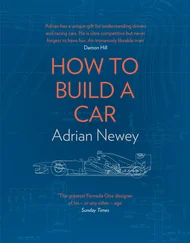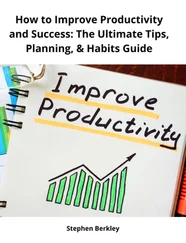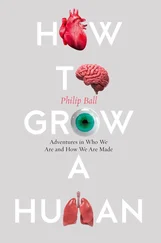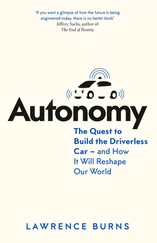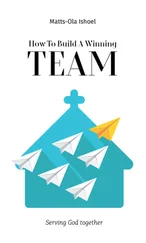Eyal, Nir - Hooked - How to Build Habit-Forming Products
Здесь есть возможность читать онлайн «Eyal, Nir - Hooked - How to Build Habit-Forming Products» весь текст электронной книги совершенно бесплатно (целиком полную версию без сокращений). В некоторых случаях можно слушать аудио, скачать через торрент в формате fb2 и присутствует краткое содержание. Год выпуска: 2014, Издательство: Nir Eyal, Жанр: Старинная литература, на английском языке. Описание произведения, (предисловие) а так же отзывы посетителей доступны на портале библиотеки ЛибКат.
- Название:Hooked: How to Build Habit-Forming Products
- Автор:
- Издательство:Nir Eyal
- Жанр:
- Год:2014
- ISBN:нет данных
- Рейтинг книги:5 / 5. Голосов: 1
-
Избранное:Добавить в избранное
- Отзывы:
-
Ваша оценка:
- 100
- 1
- 2
- 3
- 4
- 5
Hooked: How to Build Habit-Forming Products: краткое содержание, описание и аннотация
Предлагаем к чтению аннотацию, описание, краткое содержание или предисловие (зависит от того, что написал сам автор книги «Hooked: How to Build Habit-Forming Products»). Если вы не нашли необходимую информацию о книге — напишите в комментариях, мы постараемся отыскать её.
Hooked: How to Build Habit-Forming Products — читать онлайн бесплатно полную книгу (весь текст) целиком
Ниже представлен текст книги, разбитый по страницам. Система сохранения места последней прочитанной страницы, позволяет с удобством читать онлайн бесплатно книгу «Hooked: How to Build Habit-Forming Products», без необходимости каждый раз заново искать на чём Вы остановились. Поставьте закладку, и сможете в любой момент перейти на страницу, на которой закончили чтение.
Интервал:
Закладка:
Relationship triggers can create the viral hypergrowth entrepreneurs and investors lust after. Sometimes relationship triggers drive growth because people love to tell each other about a wonderful offer.
For example, it is hard to top PayPal’s viral success of the late 1990s. [xlv]PayPal knew that once users started sending each other money online they would realize the tremendous value of the service. The allure that someone just sent you money was a huge incentive to open an account, and PayPal’s growth spread because it was both viral and useful.
Unfortunately, some companies utilize viral loops and relationship triggers in unethical ways by deploying so-called “dark patterns.” When designers intentionally trick users into inviting friends or blasting a message to their social networks, they may see some initial growth, but it comes at the expense of the social currency of users, including their goodwill and trust. When people discover they’ve been duped, they vent their frustration and stop using the product.
Proper use of relationship triggers requires building an engaged user base that is enthusiastic about sharing the benefits of the product with others.
4. Owned Triggers
Owned triggers consume a piece of real-estate in the user’s environment. They consistently show up in daily life and it is ultimately up to the user to opt into allowing these triggers to appear.
For example, an app icon on the user’s phone screen, an email newsletter to which the user subscribes, or an app update notification only appear if the user wants it there. As long as the user agrees to receive a trigger, the company that sets the trigger owns a share of the user’s attention.
Owned triggers are only set after users sign up for an account, submit their email address, install an app, opt into newsletters, or otherwise indicate they want to continue receiving communications.
While paid, earned, and relationship triggers drive new user acquisition, owned triggers prompt repeat engagement until a habit is formed. Without owned triggers and users’ tacit permission to enter their attentional space, it is difficult to cue users frequently enough to change their behavior.
***
But external triggers are only the first step. The ultimate goal of all external triggers is to propel users into and through the Hook Model so that, after successive cycles, they do not need further prompting from external triggers. When users form habits, they are cued by a different kind of trigger: internal triggers.
Internal Triggers
When a product becomes tightly coupled with a thought, an emotion, or a pre-existing routine, it leverages an internal trigger. Unlike external triggers, which use sensory stimuli like a morning alarm clock or giant “Log-In Now” button, you can’t see, touch, or hear an internal trigger. Internal triggers manifest automatically in your mind. Connecting internal triggers with a product is the brass ring of consumer technology.
For Yin, the young woman with the Instagram habit, her favorite photo app manufactured a predictable response cued by an internal trigger. Through repeated conditioning, a connection was formed between Yin’s need to capture images of the things around her and the app on her ever-present mobile device.
Emotions, particularly negative ones, are powerful internal triggers and greatly influence our daily routines. Feelings of boredom, loneliness, frustration, confusion, and indecisiveness often instigate a slight pain or irritation and prompt an almost instantaneous and often mindless action to quell the negative sensation. For instance, Yin often uses Instagram when she fears a special moment will be lost forever.
The severity of the discomfort may be relatively minor — perhaps her fear is below the perceptibility of consciousness — but that’s exactly the point. Our life is filled with tiny stressors and we’re usually unaware of our habitual reactions to these nagging issues.
Positive emotions can also serve as internal triggers, and may even be triggered themselves by a need to satisfy something that is bothering us. After all, we use products to find solutions to problems. The desire to be entertained can be thought of as the need to satiate boredom. A need to share good news can also be thought of as an attempt to find and maintain social connections.
As product designers, it is our goal to solve these problems and eliminate pain — to scratch the user’s itch. Users who find a product that alleviates their pain will form strong, positive associations with the product over time. After continued use, bonds begin to form — like the layers of nacre in an oyster — between the product and the user whose need it satisfies. Gradually, these bonds cement into a habit as users turn to your product when experiencing certain internal triggers.
A study at the Missouri University of Science and Technology illustrates how tech solutions can provide frequent psychological relief. [xlvi]In 2011, a group of 216 undergraduates volunteered to have their Internet activity anonymously tracked. Over the course of the academic year, the researchers measured the frequency with which these students used the web and what they were doing online.
At the end of the study, the researchers compared anonymized data of students who visited the university’s health services to treat symptoms of depression. “We identified several features of Internet usage that correlated with depression,” wrote Sriram Chellappan, one of the study’s authors. [xlvii]“For example, participants with depressive symptoms tended to engage in very high email usage…Other characteristic features of depressive Internet behavior included increased amounts of video watching, gaming, and chatting.”
The study demonstrated that people suffering from symptoms of depression used the Internet more. Why is that? One hypothesis is that those with depression experience negative emotions more frequently than the general population and seek relief by turning to technology to lift their mood.
Consider, perhaps, your own emotion-cued behaviors. What do you do in response to your internal triggers?
When bored, many people seek excitement and turn to dramatic news headlines. When we feel overly stressed we seek calm, perhaps finding relief in sites like Pinterest. When we feel lonely, destinations like Facebook and Twitter provide instant social connections.
To ameliorate the sensation of uncertainty, Google is just a click away. Email, perhaps the mother of all habit-forming technology, is a go-to solution for many of our daily agitations, from validating our importance (or even, simply our existence) by checking to see if someone needs us, to providing an escape from life's more mundane moments.
Once hooked, using these products does not always require an explicit call-to-action. Instead, they rely upon our automatic responses to feelings that precipitate the desired behavior. Products that attach to these internal triggers provide users with quick relief. Once a technology has created an association in users’ minds that the product is the solution of choice, they return on their own, no longer needing prompts from external triggers.
In the case of internal triggers, the information about what to do next is encoded as a learned association in the user’s memory.
But the association between an internal trigger and your product is not formed overnight. It can take weeks or months of frequent usage for internal triggers to latch onto cues. New habits are sparked by external triggers, but associations with internal triggers are what keeps users hooked.
As Yin said, “I just use it whenever I see something cool.” By thoughtfully moving users from external to internal triggers, Instagram designed a persistent routine in people’s lives. A need is triggered in Yin’s mind every time a moment is worth holding onto, and for her, the immediate solution is Instagram. Yin no longer requires an external stimulus to prompt her to use the app — the internal trigger happens on its own.
Читать дальшеИнтервал:
Закладка:
Похожие книги на «Hooked: How to Build Habit-Forming Products»
Представляем Вашему вниманию похожие книги на «Hooked: How to Build Habit-Forming Products» списком для выбора. Мы отобрали схожую по названию и смыслу литературу в надежде предоставить читателям больше вариантов отыскать новые, интересные, ещё непрочитанные произведения.
Обсуждение, отзывы о книге «Hooked: How to Build Habit-Forming Products» и просто собственные мнения читателей. Оставьте ваши комментарии, напишите, что Вы думаете о произведении, его смысле или главных героях. Укажите что конкретно понравилось, а что нет, и почему Вы так считаете.


